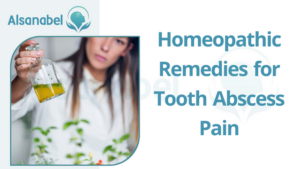What is a Tooth Abscess and its Causes
A tooth abscess is a collection of pus that forms inside the teeth or in the surrounding gums. It is usually caused by a bacterial infection that can occur when tooth decay or a dental injury is left untreated. The abscess can lead to severe pain, swelling, and discomfort.
The development of a tooth abscess starts with a cavity or a crack in the tooth’s outer layer, known as enamel. When bacteria penetrate the enamel and reach the underlying dentin, it can spread to the dental pulp and cause an infection. The infection then progresses to the root of the tooth and can extend to the surrounding tissues, resulting in the formation of an abscess.
Common causes of tooth abscess
- Untreated tooth decay: When dental cavities are not addressed promptly, they can progress and reach the inner layers of the tooth, leading to an abscess.
- Dental trauma: Injuries such as fractures, chips, or cracks in the tooth can create an entry point for bacteria, increasing the risk of an abscess.
- Gum disease: Advanced gum disease, known as periodontitis, can cause gum pockets that harbor bacteria. These bacteria can infect the tooth’s root and contribute to abscess formation.
- Failed dental procedures: If a dental treatment, such as a root canal, is not performed correctly or fails to eliminate all infection, it can result in the development of an abscess.
- Weakened immune system: Individuals with weakened immune systems, due to conditions like diabetes or HIV/AIDS, are more susceptible to tooth abscesses as their bodies may struggle to fight off infections effectively.
Symptoms and Diagnosis of Tooth Abscess

Identify the symptoms
- Severe and persistent toothache
- Throbbing pain in the affected tooth or surrounding area
- Sensitivity to hot or cold temperatures
- Swelling in the face or jaw
- Redness and tenderness in the gums
- Bad breath or a foul taste in the mouth
- Difficulty chewing or biting
- Fever and general malaise
It is important to note that not all tooth abscesses present with symptoms, especially in the early stages. However, if any of the above symptoms are experienced, it is crucial to seek dental attention promptly.
How tooth abscess is diagnosed by a dentist
When diagnosing a tooth abscess, a dentist will typically perform the following:
- Dental examination: The dentist will visually inspect the affected tooth and surrounding tissues, looking for signs of swelling, redness, or drainage.
- X-rays: Dental X-rays can reveal the extent of the infection, the presence of abscesses, and any underlying dental issues such as decay or bone loss.
- Pulp vitality test: This test assesses the health of the dental pulp by evaluating the tooth’s response to temperature changes or electrical stimulation.
- Percussion and palpation: The dentist may gently tap on the tooth and surrounding teeth, as well as apply pressure to assess any pain or discomfort.
- Dental history review: The dentist will discuss any previous dental procedures, trauma, or symptoms experienced by the patient.
Based on the findings, the dentist will determine the presence and severity of the abscess and recommend appropriate treatment. This may include prescribing antibiotics to control the infection, draining the abscess, performing a root canal, or extracting the affected tooth.
Early diagnosis and treatment are crucial to prevent complications and alleviate pain associated with tooth abscesses. Regular dental check-ups and practicing good oral hygiene can help detect and prevent these conditions.
Traditional Pain Relief Methods
Over-the-counter pain medications
Over-the-counter pain medications such as ibuprofen or acetaminophen can help alleviate the discomfort associated with tooth abscess. These medications work by reducing inflammation and blocking pain signals. It is important to follow the recommended dosage and consult a healthcare professional if the pain persists or worsens.
Oral numbing gels and remedies
Oral numbing gels and remedies can provide temporary relief from tooth abscess pain. These products contain local anesthetics such as benzocaine that numb the affected area, reducing pain and discomfort. It is essential to follow the instructions provided and avoid excessive use to prevent any adverse effects.
It is important to note that while these traditional pain relief methods can provide temporary relief, they do not address the underlying cause of the tooth abscess. Seeking professional dental care is crucial to properly diagnose and treat the abscess, preventing further complications.
In addition to traditional pain relief methods, there are also a few home remedies that may help alleviate tooth abscess pain. These include rinsing the mouth with warm saltwater, applying a cold compress to the affected area, and practicing good oral hygiene by brushing and flossing regularly.
However, it is essential to remember that these home remedies should not replace professional dental care. They should be used as a temporary measure until proper treatment can be obtained. Delaying or neglecting dental treatment can result in the worsening of the abscess, leading to more severe pain and potential complications.
Herbal Remedies for Tooth Abscess Pain
Clove oil for immediate relief
Clove oil is a popular herbal remedy known for its numbing and soothing properties. It contains a substance called eugenol, which has natural analgesic and anti-inflammatory effects. Applying a small amount of clove oil directly to the affected tooth can provide immediate relief from the pain associated with a tooth abscess.
It is important to dilute the clove oil with a carrier oil such as olive oil before applying it to the tooth, as clove oil can be strong and may cause irritation if used undiluted. Keep in mind that while clove oil can alleviate pain, it does not treat the underlying cause of the tooth abscess, so it is still crucial to seek professional dental care.
Calendula and its anti-inflammatory properties
Calendula, also known as marigold, is another herbal remedy that can help reduce inflammation and relieve tooth abscess pain. Calendula contains compounds like flavonoids that have anti-inflammatory properties. Using a calendula-infused mouthwash or applying a calendula gel directly to the affected area can help reduce swelling and discomfort.
Calendula has been used for centuries in traditional medicine for various oral health conditions, including toothaches and gum infections. However, it is important to note that calendula should not be used as a substitute for professional dental care. It is recommended to consult with a dentist before using any herbal remedies to ensure they are safe and appropriate for your specific condition.
Homeopathic Remedies for Tooth Abscess Pain

Arnica and its pain-relieving effects
Arnica is a homeopathic remedy that is commonly used for pain relief. It is derived from the Arnica montana plant and has been used for centuries to treat various types of pain, including toothaches. Arnica works by reducing inflammation and improving blood flow to the affected area, which can help alleviate the pain associated with a tooth abscess.
Arnica can be taken in various forms, such as pellets or gels, and should be used according to the manufacturer’s instructions or under the guidance of a homeopathic practitioner. It is important to note that while Arnica may provide temporary relief from tooth abscess pain, it is essential to seek professional dental care for proper diagnosis and treatment of the underlying cause of the abscess.
Plantago and its benefits for toothaches
Plantago, also known as plantain, is another homeopathic remedy that has been used to treat toothaches and other dental problems. It contains active compounds, such as allantoin and aucubin, which have anti-inflammatory and analgesic properties.
Plantago can be taken orally in the form of pellets or used topically as a gel or ointment. It is believed to help reduce pain and swelling associated with tooth abscesses. However, it is important to remember that while Plantago may offer temporary relief, it is not a substitute for professional dental care. Consulting with a dentist is crucial to address the underlying cause of the abscess and prevent further complications.
Natural Antibacterial Agents for Tooth Abscess
Tea tree oil for fighting infection
Tea tree oil is a natural antibacterial agent that can be effective in fighting infections, including tooth abscesses. It contains compounds such as terpinen-4-ol that have antimicrobial properties and can help kill the bacteria causing the abscess. Tea tree oil can be diluted with a carrier oil, such as coconut oil, and applied topically to the affected area using a cotton swab.
It is important to use tea tree oil in moderation and follow the recommended dilution ratio to avoid skin irritation. Additionally, it is crucial to consult with a dentist for proper diagnosis and treatment of the abscess.
Garlic’s antibacterial properties
Garlic is known for its powerful antibacterial properties, making it a potential natural remedy for tooth abscesses. The active compound in garlic called allicin has been found to exhibit antimicrobial activity against various bacteria. Chewing on a garlic clove or applying crushed garlic directly to the affected area may help inhibit the growth of bacteria in the abscess.
However, it is important to note that garlic should not replace professional dental care, and it is crucial to seek a dentist’s advice for appropriate treatment.
Mind-Body Techniques for Pain Management
Deep breathing exercises for relaxation
Deep breathing exercises are simple techniques that can help manage pain and promote relaxation. By focusing on slow, deep breaths, individuals can activate their body’s natural relaxation response, which can help reduce stress and alleviate pain.
To practice deep breathing, find a comfortable position and take a slow, deep breath in through the nose, expanding the diaphragm. Hold the breath briefly and then exhale slowly through the mouth. Repeat this process for several minutes or until a sense of calm is achieved. Deep breathing exercises can be done anytime and anywhere, making them a convenient tool for pain management.
Visualization and relaxation techniques
Visualization is a technique that involves creating mental images to promote relaxation and alleviate pain. By picturing peaceful and calming scenes in the mind, individuals can divert their attention away from the pain and focus on positive sensations.
Along with visualization, relaxation techniques such as progressive muscle relaxation can be used to reduce tension and enhance the overall sense of well-being. This involves systematically tensing and then relaxing different muscle groups in the body, leading to a deep state of relaxation. Guided imagery recordings or apps can also be helpful for individuals who struggle with visualization on their own.
Lifestyle Changes to Prevent Tooth Abscess

Proper oral hygiene practices
Maintaining proper oral hygiene is crucial to prevent tooth abscess. Here are some essential practices to incorporate into your daily routine:
- Brushing: Brush your teeth at least twice a day, using a soft-bristled toothbrush and fluoride toothpaste. Make sure to clean all surfaces of your teeth and brush gently along the gumline.
- Flossing: Regularly floss between your teeth to remove plaque and food particles that can contribute to tooth decay and abscess formation.
- Mouthwash: Use an antimicrobial mouthwash to further reduce bacteria in your mouth. Consult with your dentist to find a mouthwash that suits your needs.
Nutritional tips for strong teeth and gums
Maintaining a healthy diet plays a significant role in preventing tooth abscess. Consider the following tips:
- Limit sugary foods and drinks: Consuming excessive sugar can contribute to tooth decay and cavities. Opt for healthier alternatives such as fruits and vegetables.
- Calcium-rich foods: Include plenty of calcium-rich foods in your diet, such as milk, cheese, yogurt, and leafy greens. Calcium helps strengthen your teeth and bones.
- Vitamin C: Foods high in vitamin C, such as citrus fruits and berries, promote gum health and can help prevent gum disease, which can lead to abscesses.
Incorporating these lifestyle changes into your daily routine can significantly reduce the risk of tooth abscess. However, it is essential to remember that regular dental check-ups and professional cleanings are still necessary for optimal oral health. If you experience any symptoms such as tooth pain or swelling, it is crucial to seek dental treatment promptly to prevent the progression of a potential abscess.
Summary of natural remedies for tooth abscess pain
Natural remedies can provide temporary relief from tooth abscess pain, but they are not a substitute for professional dental treatment. Some natural remedies that may help alleviate tooth abscess pain include:
- Saltwater rinse: Gargling with warm saltwater can help reduce inflammation and relieve pain associated with a tooth abscess.
- Clove oil: Applying clove oil directly to the affected tooth can provide temporary pain relief due to its natural anesthetic properties.
- Garlic: Chewing on a garlic clove can release allicin, a compound with antimicrobial properties that may help fight the infection.
- Cold compress: Applying a cold compress to the cheek near the affected tooth can help numb the area and reduce swelling.
It is important to note that while these remedies may help manage the pain, they do not address the underlying infection. Seeking professional dental treatment is crucial to resolve the abscess and prevent further complications.
Importance of consulting a dentist for proper treatment.
Consulting a dentist is essential for proper diagnosis and treatment of a tooth abscess. Dentists can:
- Determine the cause of the abscess: Dentists will thoroughly examine the affected tooth and surrounding tissues to identify the underlying cause of the abscess, such as tooth decay, periodontal disease, or a cracked tooth.
- Provide appropriate treatment: Dentists may recommend various treatment options depending on the severity of the abscess, including root canal therapy, incision and drainage, or tooth extraction.
- Prescribe antibiotics: In some cases, dentists may prescribe antibiotics to help control the infection and prevent it from spreading.
Ignoring a tooth abscess or attempting to treat it at home can lead to serious complications, such as the spread of the infection to other parts of the body. It is vital to consult a dentist as soon as possible to ensure proper treatment and prevent further oral health issues.
